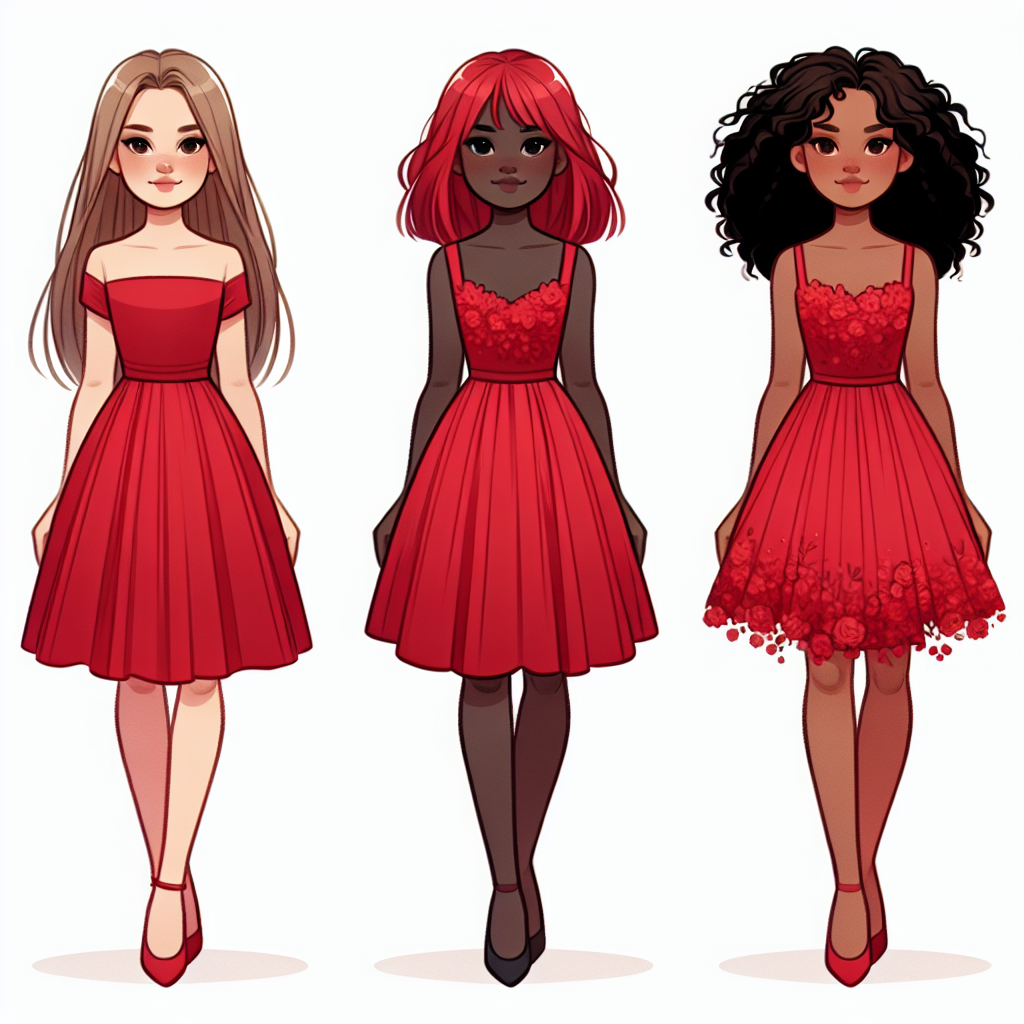Fashion and identity are deeply intertwined, particularly among girls who often utilize clothing to express their individuality. One iconic piece that embodies this expressive power is the red dress. Throughout history, red has been associated with passion, power, and confidence. A red dress can transform an outfit from mundane to extraordinary, becoming a canvas for girls to showcase their unique identities.
The choice of a red dress often signifies more than mere fashion; it reflects a state of mind or a moment in the wearer’s life. For many young women, donning a red dress can evoke feelings of bravery and self-assurance. The boldness of red complements their desire to stand out in a crowd. In social settings, girls may choose red to assert their presence, facilitate connections, or even embrace their femininity in empowering ways.
Cultural implications of the color red further enhance the meanings behind a red dress. In Western cultures, red traditionally symbolizes love and desire, while in many Eastern cultures, it represents luck and prosperity. Girls navigating these cultural dimensions can tailor their red dress choices to reflect their backgrounds and experiences. For example, a girl with Asian heritage may wear a red dress during festive occasions to honor cultural traditions, merging identity with celebration.
The versatility of red dresses allows for varied interpretations of personal style. From sleek, form-fitting styles that emphasize silhouette to whimsical, flowing designs that capture a sense of freedom, each choice communicates something different. Fashion influencers and celebrities often play a significant role in this expression. High-profile figures like Taylor Swift or Ariana Grande often flaunt red dresses at significant events, inspiring young girls to adopt similar styles for their own personal statements.
Moreover, social media platforms have revolutionized the way girls present their fashion choices. Hashtags like #RedDress and #FashionForIdentity allow users to share their unique looks and stories. Visual platforms such as Instagram serve as stages where girls exhibit their fashion, receiving validation from followers and building a community around collective interests in self-expression. Engaging with these platforms enables girls to curate an identity that aligns with their fashion choices and personal experiences.
The styling of red dresses also varies according to individual preferences. Accessories, hairstyling, and makeup all contribute to the overall message conveyed by the dress. For instance, pairing a classic red dress with understated jewelry and natural makeup can project an aura of elegance and sophistication. Conversely, bold accessories and striking makeup can imbue a sense of fun and rebellion. Each choice signals various dimensions of identity and attitude, allowing the wearer to adjust their portrayal based on context and mood.
Apart from personal style, red dresses can also foster camaraderie among girls. Group outings, proms, or events where friends coordinate their outfits might feature multiple girls in various red dress styles. This collective embrace of the color red can symbolize unity, shared experiences, and mutual support within friendships. In these instances, the red dress becomes a tool for collective identity, stitching together various personalities into a single narrative.
Furthermore, the emotional and psychological effects of wearing a red dress cannot be overlooked. Studies show that wearing bold colors can significantly boost confidence and self-esteem. The act of choosing to wear a red dress may empower girls to step into their identity more assertively, cultivating self-acceptance and fostering positive body image. The simple act of getting dressed can thus become an empowering ritual, indirectly influencing how girls perceive themselves.
In the realm of fashion retail, the red dress has become a staple item that brands often promote in various styles and silhouettes, catering to diverse body shapes and sizes. Inclusivity in fashion allows girls to find a red dress that resonates with their identity, further affirming that there is no single way to wear a red dress. Many brands now emphasize body positivity, encouraging girls of all shapes and sizes to embrace their individuality while wearing such a powerful color.
The narrative surrounding red dresses also taps into broader societal discussions about femininity and strength. A red dress can be viewed as a symbol of female empowerment, illustrating that women can reclaim the notion of femininity while exuding strength and confidence. The juxtaposition of softness and power that a red dress represents challenges traditional perceptions of gender and identity.
Ultimately, the way girls express themselves through red dresses is multi-faceted and deeply personal. As an embodiment of identity, the red dress serves as a reflection of cultural heritage, personal experiences, and emotional states, while simultaneously presenting a blank canvas for interpretation and creativity. With each choice made, girls navigate the complex interplay of fashion and identity, transforming clothing into a powerful medium for self-expression.



